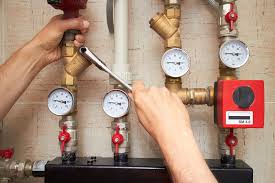
23 Oct A Real Turn Off
You may never need to shut off your water, gas or electricity in an emergency, but if you do, it’s better to be prepared! A good home project is to locate your utility shut-offs and label them with brightly colored tags bearing simple instructions on how they operate. This can be invaluable in case of an emergency.
Water
The main shut-off for water will likely be where the water supply enters your home. Other water shut offs in your home are located near water-using devices. The main shut-off valve will probably look like a regular, round faucet handle. Turning the handle clockwise will close the valve (remember: right/tight – left/loose). It could also be a ‘ball-valve’ with a lever handle. If that’s the case, moving the handle so it is perpendicular to the pipe will turn it off.
Gas
If your home is connected to Natural Gas, the main shut-off is generally located on a pipe near your gas meter. The valve will most likely be a tab sticking out of a round base. When the gas is on, the tab is parallel with the pipe. To turn the gas off, use an adjustable wrench or other appropriate tool to turn the tab perpendicular to the pipe.
Other shut-offs enable you to turn off gas to individual appliances throughout your home (i.e., the furnace or water heater). They are located on the gas pipes near appliances.
Electric
To turn off your electricity, locate your electrical panel. It is usually where the electricity comes into your house (either from above ground power lines or through buried lines).
Before you do ANYTHING with electrical power, here are a few safety rules:
- Always wear rubber-soled shoes and stand on a dry board or rubber mat (concrete conducts electricity well). Call a professional if the floor or the
panel is wet. Never stand on or touch anything wet! - To ensure that you don’t touch anything that will “ground” you, use only one hand when touching the panel; keep your other hand in your pocket or behind your back.
- As an extra precaution, use your knuckle to turn off the power. Electrical current can sometimes cause muscles to contract involuntarily around the source of electricity. Using your knuckle eliminates this risk.
Your panel will include either several switches or cylindrical fuses which control power to different areas throughout your house. Most panels also have a main breaker that turns off power to the entire house. If it’s a switch, simply flip the breaker or breakers to OFF. If it’s not a switch, you’ll have to pull out the block(s), take out the fuse(s) or flip a lever(s) – depending on your control panel.
 CLICK HERE FOR PODCAST
CLICK HERE FOR PODCAST